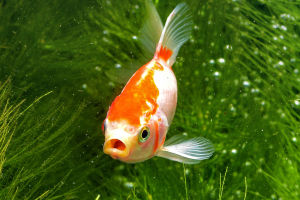Camels are unique creatures in nature that have played a crucial role in the deserts of the Middle East and North Africa for a long time.
These “ships of the desert” are not only adapted to extreme climatic conditions but also hold significant positions in culture, economy, and scientific research.
This article will provide a detailed introduction to camels from the aspects of their biological characteristics, ecological adaptations, cultural significance, and economic value.
Biological Characteristics
Camels are large herbivorous mammals, primarily divided into two species: the Bactrian camel and the Dromedary camel.
The Bactrian camel is mainly found in the cold deserts and mountainous regions of Central Asia, while the Dromedary camel lives in tropical desert regions such as the Arabian Peninsula and North Africa.
1. Size and Structure
Camels have a large body size, with males reaching lengths of 3.5 to 4.5 meters and shoulder heights of about 2.2 to 3.5 meters.
Their most notable feature is their hump, which is a reservoir of fat, different from the fat distribution in other animals. The hump allows camels to utilize stored fat for energy during food shortages.
2. Physiological Adaptations
Camels have an extraordinary physiological adaptation ability. Their body temperature can fluctuate between 40°C and 42°C, which is quite rare among animals.
This ability enables them to maintain normal physiological functions in high-temperature environments. Additionally, camel excretion is highly concentrated to minimize water loss. Their nostrils can effectively recover moisture during breathing to reduce water loss.
3. Foot Structure
Camels have wide, padded feet that enable them to walk steadily on sand without sinking. The thick pads on the soles provide stability and prevent burns on hot ground.
Ecological Adaptations
Camels live in extreme desert environments characterized by extreme temperature fluctuations and scarce precipitation. Their adaptation to these conditions is key to their survival.
1. Water Management
Camels can survive for several days or even weeks without water.
Their drinking method is also unique, as they can consume large amounts of water at once to replenish their body's needs. Even in extremely arid conditions, camels effectively utilize stored body water and maintain water balance by reducing sweat production.
2. Food Choices
Camels primarily feed on dry plants, such as desert grasses and shrubs. They can tolerate salt and other potentially harmful substances in plants, allowing them to survive in nutritionally scarce environments.
Cultural Significance
Camels hold significant positions in the cultures of the Middle East and North Africa. They are not only important transportation tools but also carry symbolic meanings.
1. Transportation and Transport
Historically, camels have been called “ships of the desert” and served as the primary means of transportation in desert regions.
They were used to transport goods and passengers, especially along the Silk Road, where camel caravans were crucial for transportation. Their endurance and load-carrying capacity made long-distance travel possible.
2. Cultural Symbolism
In many cultures, camels are seen as symbols of wealth and dignity. In Arab culture, camels are not only practical animals but also symbols of luxury and status. Traditionally, wealthy families owned many camels and displayed their wealth and social status through camel races and other activities.
Economic Value
The economic value of camels is mainly reflected in their milk, meat, leather, and wool.
1. Milk
Camel milk is widely consumed in many desert regions and is considered a nutritious food. It contains more vitamins and minerals compared to cow's milk and has a lower fat content. Camel milk is also used to make traditional dairy products like cheese and yogurt.
2. Meat
Although camel meat is not commonly consumed in some cultures, it is used to prepare various traditional dishes in desert regions, particularly in Arab countries. The meat is relatively firm but rich in protein and contains a small amount of fat.
3. Leather and Wool
Camel leather is highly valued for making high-quality leather products. Their wool is also used to make clothing, tents, and other traditional items, particularly in cold climates where it provides excellent insulation.
Conclusion
As a species adapted to extreme environments, camels occupy an important place in nature due to their unique biological characteristics and adaptability.
They play a vital role in ecosystems and have profound impacts on cultural and economic fields. With further research and understanding of camels, we hope to better utilize their characteristics to address some of the challenges faced by modern society.


